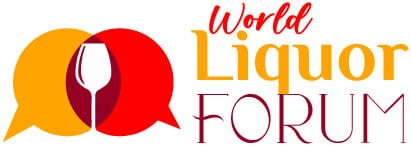
Old Monk: The Rise, Fall & The Battle to Stay Relevant
Old Monk, an iconic Indian rum brand, has experienced significant fluctuations in its market position over the years. In 2002, it was India’s largest-selling spirits brand, with sales of 7.9 million cases, surpassing competitors like Bagpiper Whisky and McDowell’s No.1 Celebration Rum. However, by 2012, its sales had declined to approximately 4 million cases, marking an 11% drop from the previous year. This decline continued, and by 2014, Old Monk’s sales further decreased while competitors like McDowell’s No.1 Celebration Rum experienced growth.
Despite these challenges, Old Monk has maintained a loyal consumer base and continues to be a significant player in the rum industry. As of 2023, it ranks 12th among the world’s best-selling rum brands, reflecting its enduring legacy and popularity, particularly in India. In recent years, Old Monk has also expanded its global presence, exporting to over 22 countries, including the United Arab Emirates, Latvia, and Qatar, with a total export value of approximately $10.3 million.
At its peak in 2002, Old Monk was synonymous with rum in India. Launched in 1954 by Mohan Meakin, it gained a loyal following due to its distinct vanilla-caramel flavor and affordability. It dominated the market despite never advertising. However, over the past two decades, its market share has shrunk drastically, with sales now hovering around 3 million cases.
The Legacy of an Iconic Rum
At its peak in 2002, Old Monk sold a staggering 7.9 million cases, making it India’s largest-selling rum and one of the most popular worldwide. However, fast forward to 2023, and sales have plummeted to around 3 million cases—a 62% decline. The question is, how did a brand so deeply rooted in Indian drinking culture fall so far behind?
The Decline: What Went Wrong?
Old Monk’s downfall wasn’t due to a single factor but a combination of missed opportunities, changing consumer habits, and aggressive competition. Here’s what went wrong:
1. Millennials and Gen Z Have Moved On
The modern liquor market is shifting. Younger consumers favor premium spirits, flavored alcohol, and cocktail-friendly brands. The rise of whiskey, gin, and craft beer has overshadowed traditional dark rums like Old Monk. While premiumization is driving growth in the alcohol industry, Old Monk has struggled to rebrand itself as an aspirational drink for the new generation.
2. Zero Marketing in a Digital Era
While brands like Bacardí and Captain Morgan pour millions into influencer collaborations, digital campaigns, and aggressive advertising, Old Monk has remained silent. In today’s social media-driven world, visibility is key, and Old Monk’s absence from mainstream marketing has made it invisible to new consumers.
3. Brutal Competition
In 2002, Old Monk was among the top-selling rums globally. But today, brands like Bacardí, Captain Morgan, McDowell’s No.1, and Tanduay have surged ahead. These competitors have diversified their offerings, expanded globally, and aggressively targeted emerging markets where Old Monk failed to establish a foothold.
4. No Innovation, No Evolution
Unlike competitors that have adapted to evolving tastes, Old Monk has clung to its original formula. Bacardí, for example, has launched spiced rums, flavored variants, and premium-aged editions. In contrast, Old Monk’s product line remains largely unchanged, making it hard to attract consumers looking for variety.
5. Weak Distribution & Limited International Reach
Old Monk’s inconsistent availability in premium bars, clubs, and international markets has further hurt its position. While Bacardí and Captain Morgan have a strong presence worldwide, Old Monk’s reach remains limited to select Indian markets, losing out on global sales opportunities.
Old Monk vs. The Competition: The Data Tells the Story
| Brand | Sales in 2002 (Million Cases) | Sales in 2023 (Million Cases) | Growth/Decline |
|---|---|---|---|
| Old Monk | 7.9 | ~3.0 | -62% |
| Bacardí | ~12.0 | 20.6 | +72% |
| Captain Morgan | ~5.0 | 12.1 | +142% |
| McDowell’s No.1 | ~3.5 | 6.5 | +85% |
| Tanduay | ~9.0 | 23.4 | +160% |
These numbers highlight a glaring reality—while its competitors have grown, Old Monk has lost ground.
Can Old Monk Make a Comeback?
Despite its challenges, Old Monk still holds a nostalgic value among Indian consumers. But nostalgia alone won’t keep it relevant. Here’s what the brand must do to survive and thrive:
1. Modernize Branding & Go Digital
A full-scale digital marketing revival is essential. This means Instagram campaigns, influencer partnerships, and storytelling ads that blend nostalgia with aspiration. Old Monk should highlight its legacy while making it appealing to a new-age audience.
2. Expand Product Line & Innovate
The brand must introduce new variants—spiced rums, premium-aged editions, honey-infused rums, or even ready-to-drink cocktails. Consumers today want choices, and Old Monk needs to give them a reason to pick it over Bacardí or Captain Morgan.
3. Strengthen Global Presence
It’s time for Old Monk to expand beyond India. Increasing distribution in duty-free stores, global bars, and premium liquor shops can help it capture international consumers and boost sales.
4. Improve Distribution & Visibility
A strong retail strategy is needed to place Old Monk in top-tier restaurants, five-star hotels, premium bars, and online liquor platforms. Making it available where high-spending consumers shop will help rebrand it as a premium choice.
5. Strategic Collaborations or Acquisition
If Mohan Meakin lacks the financial firepower for revival, a strategic partnership or acquisition could help. Giants like Diageo (McDowell’s No.1) or Pernod Ricard (Havana Club) could inject fresh life into the brand. However, such a move risks losing its distinct identity.
Interesting Read
The Road Ahead: A Make-or-Break Moment
Old Monk’s decline is a cautionary tale for brands that refuse to evolve. While it still enjoys fierce loyalty among older consumers, sentiment alone cannot drive long-term success.
To stage a comeback, Old Monk must embrace modern marketing, innovate its product line, expand its distribution, and strengthen its global presence. Otherwise, it risks fading into history as a once-great brand that couldn’t keep up with changing times.












